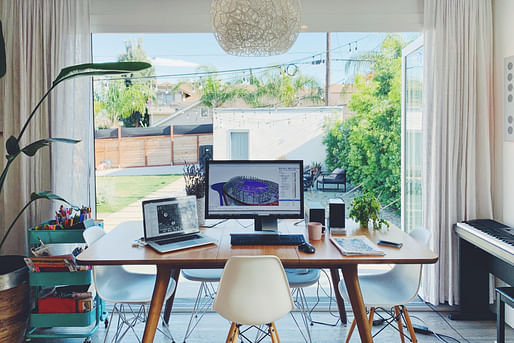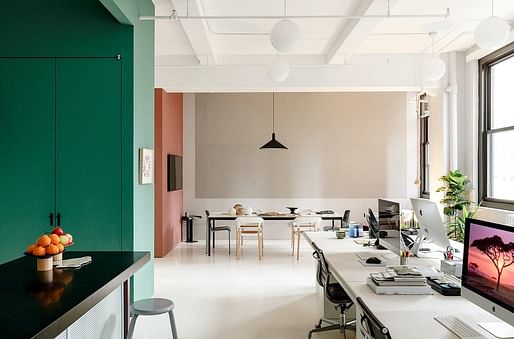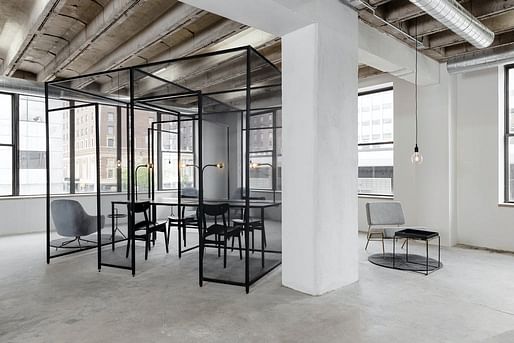
While speculation over what a long-term “post-pandemic workplace” may look like is often distilled into conversations about remote and hybrid working, the topic of asynchronous working garners relatively less attention. This comes despite the fact that many of the touted benefits of remote working, whether it be more accessible childcare options, fewer travel constraints, or personal appointments and commitments, would be more accurately described as benefits of an asynchronous workplace, rather than a remote or hybrid one.
As a BBC article on the subject from 2021 points out, remote working and asynchronous working are separate, standalone structures. While remote and hybrid working arrangements are simply a matter of location, asynchronous working is a matter of time, where each individual worker can structure their workday free of a typical 9–5 arrangement, rather than all employees of a company working the same synchronized hours.

An architecture firm, for example, could employ a 100% remote workforce but maintain a synchronized workday where all employees adhere to the same work schedule. By contrast, another firm may employ a workforce that performs 100% of their work in the office but adopt an asynchronous system where each employee has liberty to choose when they are and are not in the office. Awareness of such a distinction is important when a firm considers what aspects of work structures should be retained and discarded beyond the pandemic.
Unlike remote working, asynchronous working also has more established routes in architectural practice. While remote or hybrid work arrangements were a rarity before the pandemic, any architecture firm with multiple offices in different U.S. or international time zones will be familiar with asynchronized strategies. The same is even true of Archinect, whose editorial team spans the east and west coasts of the United States, and further afield to Europe.
These asynchronized strategies, even if not explicitly defined as such, include planning meetings to overlap different schedules, and preparing and sharing information in a way that can be interpreted by someone at a later stage, rather than relying on real-time calls or explanations.

For architects without this prior need, there are still multiple benefits to asynchronous working arrangements. With less pressure to respond immediately to emails or instant messages, architects could confidently set aside time for distraction-free deep work. Practice directors may devote uninterrupted time to producing fee bids or resource plans, while architects and assistants could allocate uninterrupted time to deep design thinking, modeling, or preparing submissions.
Asynchronous work structures also hold unexpected benefits for those joining a firm. “[New hires] have access to more information relevant to their work, and can easily follow the context around decisions that have been made prior to their start," one expert told the BBC back in 2021. “This is because with asynchronous communication, more things have to be in writing so that people can read important information. And with everything documented, it's easier to bring people up to speed.”

As noted earlier, asynchronous work structures may also strike a balance between the freedom of responding to family or personal needs which many saw as a silver lining to the pandemic, while still retaining pockets of in-person, office-based interaction which give architects opportunities to work collaboratively.
That said, the perceived dangers of asynchronized working should also be considered by architecture firms. “Communicating asynchronously with colleagues doesn't bring any of the immediate feedback or visual cues that in-person or synchronous communication provides,” the BBC warns, a factor which could hamper the traditional design processes which most architects still rely on. In addition, asynchronous working brings with it a heightened demand for each individual employee to keep track of company developments, standards, and strategies for projects.

Most importantly, setting their own hours places a higher responsibility on employees to maintain a boundary between work and home; a separation which already proves difficult for architects enduring high levels of often unpaid overtime.
As with remote or hybrid working systems, asynchronous work options are not ones which will be adopted overnight by architecture firms but instead present one model to alter and adapt while seeking to create a work environment that values productivity, client responsiveness, and cohesion as well as employee satisfaction, wellbeing, and belonging.
2 Comments
ROWE
"In a Results Only Work Environment, work is not just about being at an office or desk for a certain amount of time and calling that a full day; it’s about what you are doing to produce results for yourself, your team, and your clients. With employees focused on work instead of a clock, creativity and productivity improve."
This is the way to go.
We have been working asynchronously in 3 countries from about the time covid started. It has its upsides, as noted, however it takes a certain kind of framework that is different from practice before (at least for us). It needs a lot more discipline and when people are not on the same page a lot of divergence and frustration can pop up. Software like MIRO has definitely made it easier to keep track of what people are up to though, and that is cool. As long as we maintain the discipline of posting things as we work, same as we use time tracking software, etc. then it is good. When that fails we get a bit stuck because we need to talk to the person doing the work directly.
Working online is more problematic for us. We dont notice problems as quickly as we used to since no one is casually walking past a desk and seeing things. Also, not having physical models in front of us feels like we are missing things. Not sure if this is a real issue or not yet. Enscape and similar software, running from revit or rhino are amazing, but there is always the suspicion that a simpler physical model would allow us to see more when it comes to design...
We switched to a hybrid form of working and downsized our office when things opened up again. But even that small contact has taken a lot of stress off. I'm curious if we will continue this way, or develop something entirely different.
For really large offices I imagine all of these problems are multiplied in so many ways. Would be cool to hear how they are managing this shift (or not)...
Block this user
Are you sure you want to block this user and hide all related comments throughout the site?
Archinect
This is your first comment on Archinect. Your comment will be visible once approved.